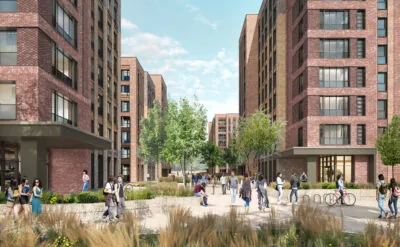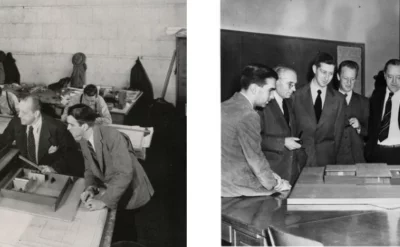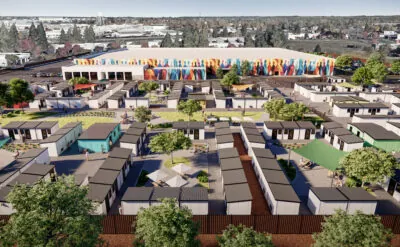The proven value of office to residential conversion projects is reshaping how owners, developers and municipalities view and adapt the built environment—unlocking opportunities to reinvigorate underperforming assets and meet critical housing needs across portfolios and sectors. As cities manage an oversupply of underutilized office buildings, these groups are working with architects and engineers to navigate the complexity of transforming these commercial spaces into viable, livable communities.
But not all office buildings are candidates for conversion. A feasibility study is required to assess the economic, aesthetic, environmental, structural, engineering and market viability for a successful conversion. Consideration must also be given to livable residential uses that range from apartment rentals and condos to attainable housing and hotels.
In this Insight Article, we share our perspective on the key drivers and considerations shaping the transformation of commercial office buildings into livable spaces.
Economic Viability
As organizations solidify their return to office strategies and redefine their real estate approaches, many office buildings remain underutilized creating an opportunity for strategic repositioning. Conversions to residential or mixed-use spaces offer a pragmatic solution to align real estate supply with evolving urban housing demands and market realities.
Eroding tax bases caused by vacant office buildings often become a catalyst for adaptive reuse in downtown cores. City planners and municipalities often greenlight office conversions more quickly than new construction to secure a stable tax base. Tax incentives for market-rate, rental and attainable housing further enhance the benefits of repurposing commercial space, providing developers with more avenues to achieve economic viability.
These measures help municipalities realize their ultimate goals of returning residents to the city’s most vibrant places. Activating dormant commercial neighborhoods and reigniting downtown cores only happens with more densification. Existing office buildings are often near transit hubs and retail centers, making them an attractive option for livable use. Location is key and walkability is high on the list to command desirable units for future tenants.
While each region and municipality have its own planning approvals and guidelines for such conversions, most North American cities offer incentive programs aimed at driving economic recovery in their cores. These programs vary based on local goals and priorities.
Chicago has recently modified its parking ordinance, allowing private developers to eliminate parking requirements for commercial and residential developments, including new housing projects. This reform is meant to boost affordable housing production, create more walkable neighborhoods, and allow parking to align with market demand. It builds on a progressive Transit Oriented Development (TOD) ordinance that allows parking reductions in transit-rich neighborhoods.
Calgary’s Downtown Strategy—a partnership between the municipal government and industry– provides co-investments to private developers to convert vacant office space to residential uses. Through qualified and unique financial incentives, the program works to revitalize the downtown core. This strategy is now being modeled in other cities.
Toronto’s Rapid Housing Initiative works to identify vacancies and potential building conversions to enable the rapid movement of people from chronic homelessness to permanent housing. Much of the renovation and new construction work is being executed through a Design-Build model that leverages the knowledge of builder-designer relationships.
The State of Ohio announced a Transformational Mixed-Use Development Program, offering $100 million in tax credits for mixed-use developments throughout the state. This initiative is expected to spur $2 billion in investments, transforming neighborhoods and activating downtown corridors, including the addition of much-needed residential development.
The County of Sacramento introduced several Housing Incentive Programs, including affordable housing fee deferrals, density bonuses and the bundling of other state and federal funds managed by the Sacramento Housing and Redevelopment Agency.
The UK announced a provision through Class O Permitted Development Rights. This provision removes the requirement to make a formal planning application as development is automatically deemed approved, except for listed buildings of historic interest. Projects receive a certificate of lawfulness, usually prior to development, enabling funding or mortgage arrangements and allowing work to progress within shortened timeframes.
Environmental and Carbon Considerations
Converting existing office space to residential-type units often requires adapting existing plumbing, electrical, mechanical and building systems–and in some cases, an entirely new building envelope. Not only do these enhancements improve the energy performance of the existing building, but they help to lower the operational carbon over time, therefore reducing the carbon footprint of the building.
The carbon reduction effect on the environment by repurposing rather than demolishing or rebuilding cannot be overstated. As architects and engineers, we have a great responsibility for a sustainable future. With aligned interests, a carbon emission analysis at the start of a project informs decisions to reduce both embodied and operational carbon. As energy costs increase in response to climate change the repurposing of existing structures begins to make greater economic sense.
Location, Characteristics and Structural Integrity
The location of the target building will have a dramatic effect on its suitability for conversion. The neighboring infrastructure is critical to the initial selection of a suitable conversion.
Many office buildings are simply not suited for residential adaptation. Large commercial office floor plates (10,000 SF / 1,000 SM or greater) result in lightless cores, outdated electrical, plumbing and HVAC systems – all contributing to a costly and exhaustive undertaking. These buildings may be suitable for other adaptive uses with more open floor plan characteristics. However, if development proformas pencil-out, creative solutions are available for most repositioning challenges. Often, smaller and older buildings offer more manageable space for conversions and come equipped with features like higher ceilings and larger windows that are highly desirable for residential use. Hotels are arguably even more appropriate for conversion to senior residences or attainable housing models.
Historically significant buildings may also be able to take advantage of preservation funding which will assist the economics of the conversion and add to the urban fabric of older neighborhoods.
Preparation and pre-analysis of the existing structure is imperative. Once the basics are understood it is a matter of building flexibility into the design layout, ensuring minimal shifts to the core to avoid compromising the structural integrity. Post tension structures can be particularly challenging as are several other systems including clay tile slabs and other older structures. An integrated design approach with a deep knowledge of the systems and understanding of the market conditions of residential planning metrics is paramount to a repositioning success.
Modern technologies like laser scanning and 3D point-cloud modeling mean a faster, less intrusive way to work with existing structures. As we continue to find new ways to repurpose buildings for multiple sectors, the lessons learned are transferable from each conversion project.
Market Trends and Social Impact
Residential design excellence provides personalization and pride of place, and the flexibility for different living patterns and household demographics. Premium amenity spaces must be integrated using open areas with direct connections to circulation spaces (stairs, elevators, entrance lobbies, mailrooms, etc.). Fortunately, many older office buildings have amenity spaces that can easily be converted for residential users and may be conveniently located to other neighborhood amenities. This is very much about supporting and fortifying the idea of a 15-minute neighborhood as urban cores continue to repopulate creating livable, walkable, sustainable neighborhoods.
It is incumbent of any conversion project to respect the adjacent neighbors yet firmly establish itself with the ideals of its new identity, knitting itself into the existing architectural characters of the streetscape and surrounding fabric. Fostering diversity and inclusion of tenants and space types will support thriving micro-communities and evoke excitement that will draw people in. Developments have not been without their controversy when space standards, amenities and quality of space are not properly considered. When approached responsibly, conversations can provide an answer to what to do with unoccupied buildings, how to reduce the use of embodied carbon and help provide a solution to the shortage of quality housing within our urban centers.
The conversion of commercial buildings is no longer viewed as a stopgap solution, temporary fix or passing trend—they are demonstrating real, long-term value for municipalities, developers and residents alike. As demand for housing continues to grow, these projects represent a sustainable path forward for revitalizing urban cores. This ongoing shift underscores the importance of flexibility and proactive exploration of existing building opportunities to meet our evolving societal needs.
Learn more about how to approach a conversion by starting a conversation with our team.



